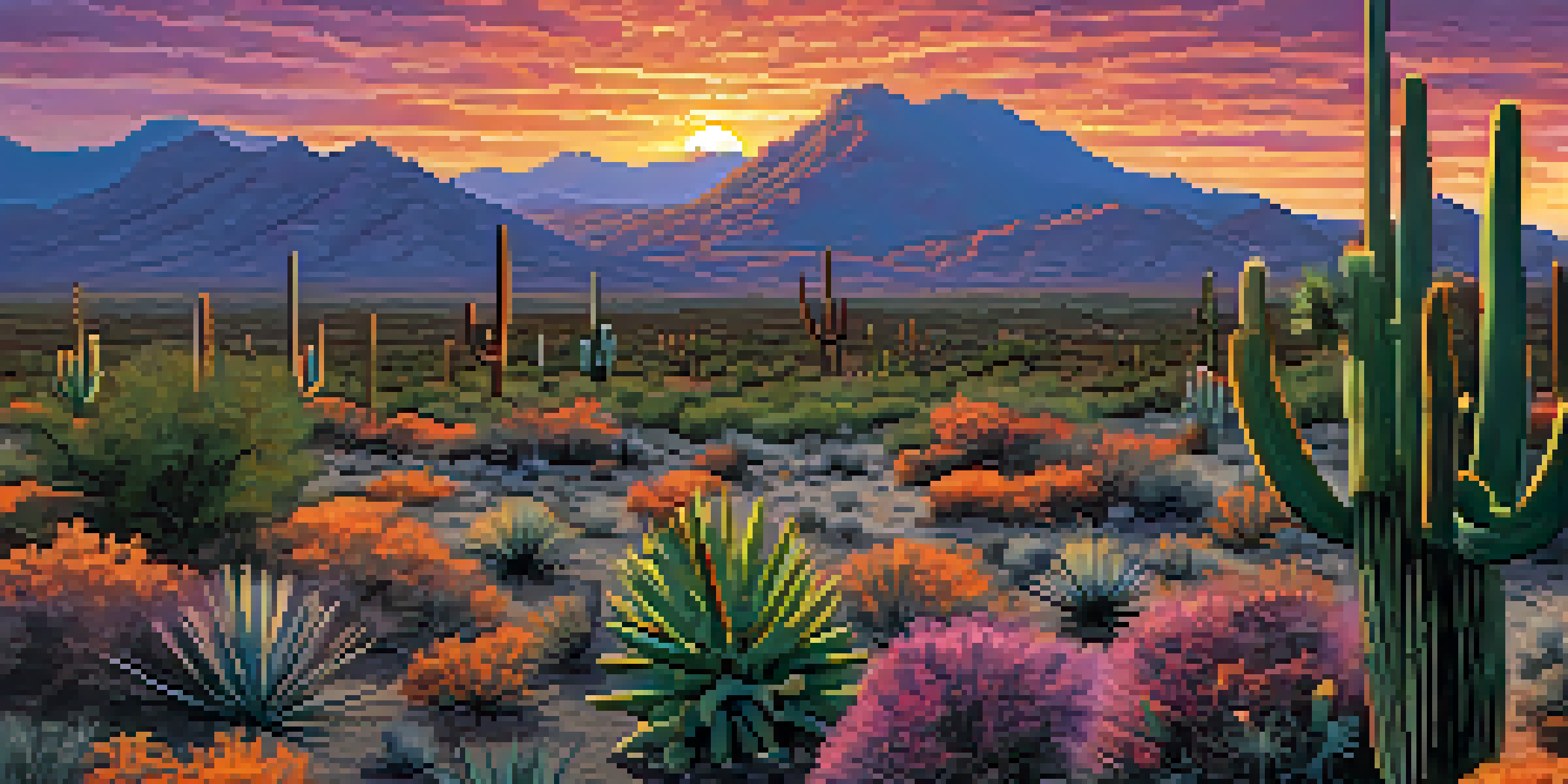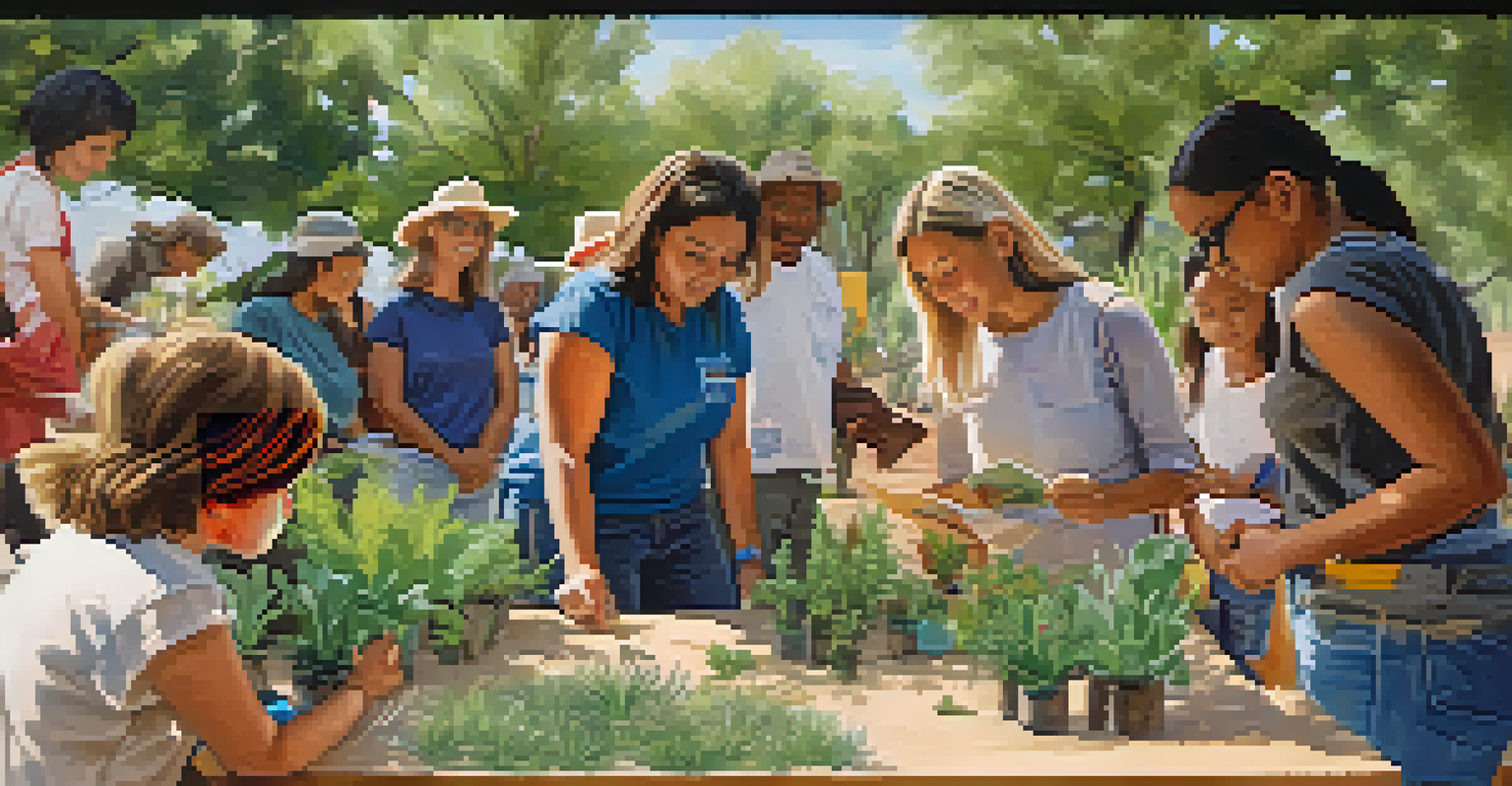The Role of Tucson in Biodiversity Conservation Efforts

Tucson's Unique Ecosystem and Its Importance
Tucson is nestled in the Sonoran Desert, a region renowned for its remarkable biodiversity. This area is home to a rich variety of flora and fauna, many of which are found nowhere else on Earth. The unique climate and geography of the region provide a critical habitat for countless species, making Tucson an essential player in biodiversity conservation efforts.
The environment is where we all meet; where we all have a mutual interest; it is the one thing all of us share.
With its diverse ecosystems ranging from deserts to mountains, Tucson serves as a living laboratory for studying ecological interactions. Local researchers and conservationists are dedicated to understanding how these ecosystems function and how they can be preserved. This knowledge is vital not just for local biodiversity but also for global conservation initiatives.
Related Resource
Moreover, Tucson's location as a crossroads of different biogeographical regions enhances its significance. It acts as a vital corridor for species migration, allowing for genetic diversity and resilience. Protecting these ecosystems is not just about saving individual species; it's about maintaining the balance of nature itself.
Community Engagement in Conservation Efforts
The local community plays a pivotal role in Tucson's conservation initiatives. Engaging residents in biodiversity efforts fosters a collective sense of responsibility towards the environment. Programs such as community clean-ups and educational workshops have empowered individuals to take action, creating a grassroots movement for conservation.

In addition, local organizations, like the Tucson Audubon Society, work tirelessly to involve citizens in bird monitoring and habitat restoration projects. By participating in these activities, people develop a deeper connection to their environment, which can lead to more sustainable behaviors in their daily lives. This communal effort is essential for long-term conservation success.
Tucson's Biodiversity Significance
Tucson's position in the Sonoran Desert makes it a critical hub for biodiversity, hosting unique species and ecosystems essential for global conservation efforts.
Furthermore, schools and universities in Tucson are integrating biodiversity studies into their curricula. By educating the next generation about the importance of conservation, Tucson is not only addressing current environmental challenges but also preparing future leaders in sustainability. This holistic approach ensures that conservation remains a priority in the community.
Research and Innovation in Biodiversity Science
Tucson is home to several leading research institutions that focus on biodiversity science, such as the University of Arizona. These institutions contribute significantly to understanding local ecosystems and developing innovative conservation strategies. Researchers often collaborate with local organizations to apply their findings directly in the field, promoting a practical approach to conservation.
In every walk with nature one receives far more than he seeks.
One notable example is the use of technology in monitoring wildlife populations. Researchers employ tools like GPS tracking and camera traps to gather data on species movements and behaviors. This information is crucial for developing effective conservation policies and understanding the impacts of climate change on local biodiversity.
Related Resource
Additionally, Tucson's research community actively participates in global biodiversity initiatives, sharing their findings and strategies with other regions facing similar challenges. This exchange of knowledge not only enhances local conservation efforts but also contributes to a broader understanding of global biodiversity issues.
Protected Areas and Their Significance
Tucson is surrounded by several protected areas, including Saguaro National Park and the Coronado National Forest. These areas are crucial for conserving the region's unique habitats and the species that inhabit them. By designating these lands as protected, Tucson ensures that biodiversity remains a priority amid urban development and other pressures.
Protected areas serve as refuges for many threatened and endangered species, providing them with safe havens to thrive. They also play a vital role in ecosystem services, such as clean air and water, which benefit both wildlife and human populations. The preservation of these spaces is fundamental to maintaining Tucson's ecological health.
Community's Role in Conservation
Local residents actively participate in conservation initiatives, fostering a shared responsibility that strengthens sustainability and environmental stewardship.
Moreover, these protected areas offer recreational opportunities for residents and visitors alike. Whether through hiking, bird-watching, or simply enjoying nature, they foster a sense of appreciation for the environment. This connection helps to cultivate a culture of conservation within the community.
Collaborative Partnerships in Conservation
A hallmark of Tucson's conservation efforts is the collaboration between various stakeholders, including government agencies, non-profits, and local businesses. These partnerships enhance the effectiveness of biodiversity initiatives and promote resource-sharing for greater impact. By working together, these groups can tackle larger challenges and implement more comprehensive conservation strategies.
For instance, the Sonoran Desert Conservation Plan exemplifies a successful collaboration among local government, conservation organizations, and community members. This plan aims to balance development with the protection of natural resources, ensuring that Tucson's growth does not come at the expense of its biodiversity. Such collaborative frameworks are essential for sustainable urban planning.
Related Resource
Additionally, partnerships often extend beyond Tucson, linking to regional and national conservation efforts. These connections allow for shared resources, knowledge, and best practices, amplifying the impact of local initiatives. By fostering collaboration, Tucson is setting a standard for how communities can work together to protect their natural heritage.
The Role of Education in Biodiversity Conservation
Education is a critical component of Tucson's biodiversity conservation efforts. Local schools and community organizations offer programs that teach people about the importance of biodiversity and the actions they can take to protect it. These educational initiatives empower individuals by providing them with knowledge and tools to make a positive impact on their environment.
Workshops, nature walks, and hands-on activities help foster a sense of stewardship among participants. For example, programs that involve students in local conservation projects not only teach them about ecology but also instill a sense of pride and responsibility for their natural surroundings. This experiential learning is vital for cultivating future advocates for biodiversity.
Education Drives Conservation Efforts
Educational programs in Tucson empower individuals with knowledge and skills necessary to protect biodiversity, shaping future advocates for the environment.
Moreover, education extends beyond formal institutions. Public awareness campaigns, often run by local conservation groups, aim to engage the broader community in discussions about biodiversity. These efforts help to raise awareness of environmental issues and encourage responsible behaviors that contribute to the conservation of Tucson's unique ecosystems.
Challenges and Opportunities Ahead
Despite its rich biodiversity and conservation efforts, Tucson faces significant challenges, including urbanization, climate change, and habitat loss. As the city continues to grow, balancing development with the preservation of natural spaces becomes increasingly complex. It's crucial for the community to remain vigilant and proactive in addressing these challenges.
However, these challenges also present opportunities for innovation and collaboration. By leveraging technology and fostering community engagement, Tucson can develop creative solutions that not only protect biodiversity but also enhance the quality of life for its residents. This proactive approach can turn potential setbacks into stepping stones for progress.

In conclusion, Tucson's role in biodiversity conservation is vital and multifaceted. By continuing to prioritize education, collaboration, and community involvement, Tucson can navigate the challenges ahead while ensuring that its unique ecosystems thrive for generations to come. The journey may be difficult, but with collective effort, the future of Tucson's biodiversity looks promising.